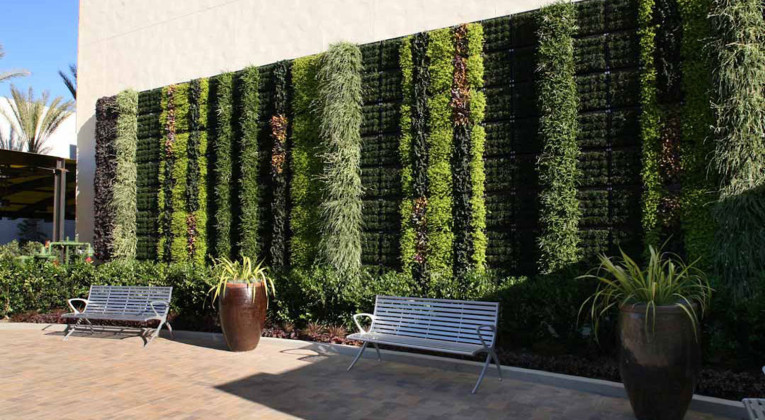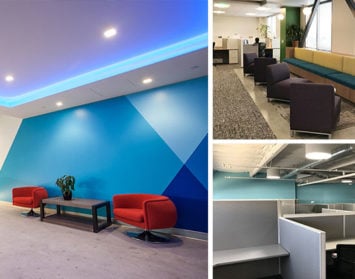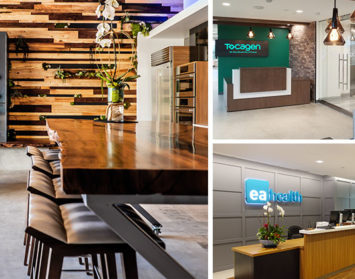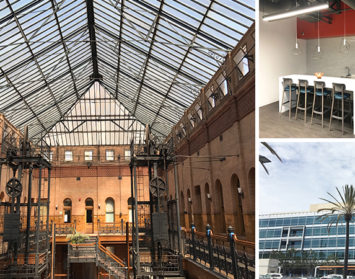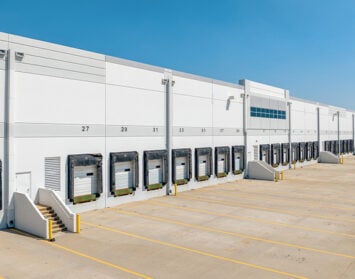By Steven Gorup
You may have seen them at Fashion Valley Mall, or at popular San Diego restaurants like Bankers Hill and Underbelly. Walls of beautiful, colorful plants, known as living walls are nothing if not eye-catching. For this reason and others, living walls have begun appearing with greater frequency in commercial office spaces as well.
In addition to being aesthetically appealing, living walls also provide numerous other benefits. They improve air quality by removing Volatile Organic Compounds (VOCs) from the air, help reduce noise within office spaces, and can even help offset the heat island effect, where higher temperatures are experienced in urban areas compared to rural areas due to lack of vegetation. As an added bonus, studies have shown that living plants in an office can help boost productivity and reduce stress among employees.
These practical benefits, coupled with the beauty a living wall can bring to an office space, make it easy to see why there has been a recent, rise in popularity of living walls in businesses and private offices.
All the same, there are some things that business owners and corporate decision makers need to know before deciding to invest in a living wall for a commercial office space. I recently had the pleasure of talking with Jim Mumford, Owner/President and Resident Horticulturist at Good Earth Plant Company and GreenScaped Buildings who shared helpful advice about what business owners should expect when installing a living wall.

First, some numbers. According to Mumford, Living walls are available in more than 20 different types of systems. All will take at least four months to fully bloom. Smaller installations will generally cost roughly $100 per square foot, while large installations may cost $200 per square foot.
Secondly, the infrastructure of the space needs to be considered before determining where in an office a living wall can be installed. Self-contained living walls often require a catch basin for drainage, while others (chiefly indoor/outdoor living walls) can simply drain into the landscaping. Suitable plumbing will also need to be in place to provide the water supply, and the space must be structurally sound to absorb the added weight of the plants, water, and soil.
When determining where in an office the living wall should be located, several things must be taken into consideration. Most living walls will need light, so proximity to synthetic or natural sunlight will be necessary. However, too much sunlight or exposure to wind (in the case of an outdoor living wall) is not ideal. Have a professional help you identify the most viable location for the installment. If your office doesn’t have a location with adequate lighting available, you may still be a terrific candidate for a living wall, but the types of plants that can live in these conditions will be limited.
Finally, it’s important to know that maintenance will be required in order to keep your living wall healthy and beautiful. In most cases, you’ll need a qualified professional to provide a weekly service call, which is typically covered by the installer for the first year at no additional charge. After the first year, you can expect maintenance to cost $2-3 per square foot per month, which includes the weekly service/maintenance call.
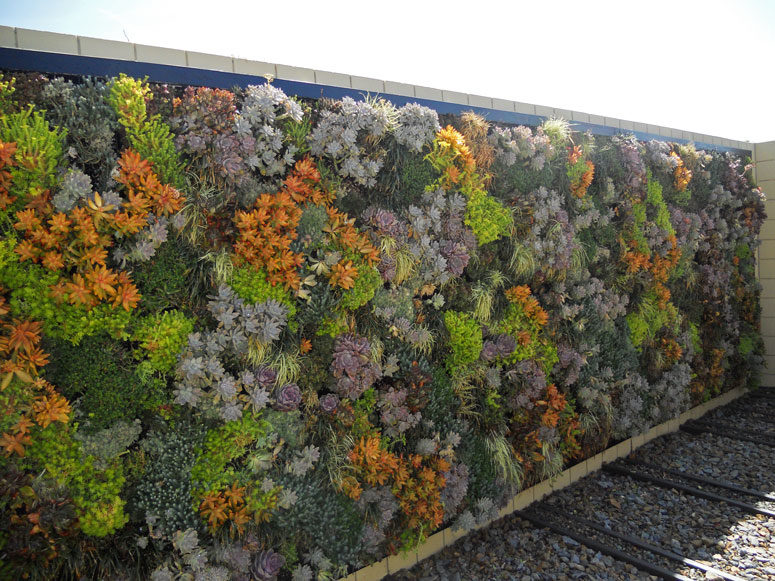
Deciding to install a living wall in your space is a decision that you’ll want to spend some time thinking about. It’s worthwhile to keep track of any questions you have so they can be addressed when you meet with a qualified professional for a consultation.
If it turns out that that your space is suitable, a living wall is a great way to infuse color and life into your office while giving you added environmental, health and workplace benefits, which can make it a terrific investment to make in your space, and in your business brand.
Steven Gorup is director of Hughes Marino, a global corporate real estate advisory firm that exclusively represents tenants and buyers. Contact Steven at 1-844-662-6635 or steven@hughesmarino.com to learn more.

